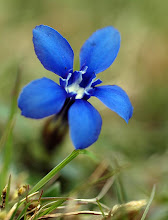




If you take a closer look at some boring houseplants they often reveal inner beauty – sometimes with just a hint of menace. The easy-to-propagate spider plant Chlorophytum (top photograph) must be one of the world’s commonest houseplants. A cross section of one of its leaves shows its inner structure, including the pale yellow water conducting vessels that you can see in the second photo – but also reveals a mass of needle-shaped crystals that fall out of the leaf when it’s cut. These are calcium oxalate crystals, known botanically as raphides, and are probably part of the plant’s defense mechanism, sticking in the tongue and soft throat tissues of any animal that tries to eat it. The raphides, revealed here as brightly coloured needles by polarised light microscopy, are confined inside undamaged cells (third photo) in intact leaves but as soon as the animal takes the first bite they are released from broken surfaces. Some cells contained different-shaped calcium oxalate crystals – often cuboid, octagonal or spiky – that are just the plant’s way of disposing of excess unwanted oxalic acid that would otherwise damage the workings of the cell (fourth photo). Different plants can sometimes be identified by the shape of the druses that they contain and sometimes very small druse crystals are present in large numbers in the cell . When they are, they jiggle around within the cell, due to the random motion of molecules in the cell sap banging into one another – a phenomenon known as Brownian motion. If you take a look at the polarised light video you can see the sparkling, kaleidoscope effect that Brownian motion in druses creates under the microscope. In some plants – such as dumb cane Dieffenbachia – the needle sharp raphides are contained in toughened cells called ideoblasts, like arrows in a quiver (bottom photo), where the cell contents are under pressure, so if the leaf surface is crushed they fly out. Plants like dumb cane can cause loss of voice or even choking in pets and young children that chew the leaves if the plant’s raphides cause the throat to swell.














Fascinating, such an ordinary and familiar (dare I say boring?) plant with hidden depth and beauty. Thank you so much.
ReplyDeleteInteresting read, great pictures, amazing video!. Crikey, thought I was back in 60's Psychodelia (spelling?) - Great!
ReplyDeleteI couldn't agree more, Toffeeapple - I used to think that its only virtues were ease of propagation and tolerance of neglect until I looked at its cells...
ReplyDeleteHi Les, polarised light is magical - if you turn the specimens through 90 degrees everything that's yellow becomes electric blue.
ReplyDelete